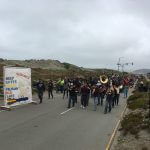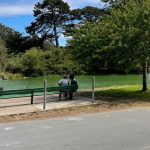How safe are your streets? Check out our updated traffic safety report cards
Every 15 hours on average, someone is taken to San Francisco General Hospital after being severely injured in a traffic crash. In 2020, 29 people lost their lives in traffic crashes in San Francisco. What does traffic safety look like where you live? Our Vision Zero traffic safety report cards help you take a closer look.
District-by-district report cards now include 2020 data
Walk SF just released updated versions of its Vision Zero traffic safety report cards for each district. These now include all publicly available crash data from 2020 so far.
The district-specific report cards include: 1) how many people have been killed or severely injured since the City committed to Vision Zero in January 2014; 2) which streets and intersections are the most dangerous; and 3) where safety improvements have and haven’t been added. Check out the report cards at walksf.org/reportcards. Report cards are available in the most common languages of each District, including English, Chinese, Spanish, Tagalog, and Russian.
The Vision Zero report cards also show what Walk SF considers to be “basic pedestrian safety improvements” needed at the most dangerous intersections. We’re excited to see that since the publication of the first report cards in January, continental crosswalks are now at 93% of high-injury network intersections and additional time for pedestrians to cross is now at 74% of high-injury network intersections.
What the 2020 crash data shows us: an average of eight people injured each day
While crash data never captures all crashes (some people injured in crashes take themselves to the hospital or do not call 911), data from 2020 so far shows that traffic crashes injured at least 2,968 people last year – more than eight per day on average. This is fewer total injuries than in 2019, though we won’t have the full picture until later this year. However, crashes were often more severe in 2020. More people died in traffic crashes in San Francisco in 2020 than in 2019, despite significantly reduced overall driving in 2020 due to the pandemic.
The urgent need for city leaders to make traffic safety a priority
The release of the updated report cards comes right before the City shares its draft blueprint for how it will tackle traffic safety in the next two years: the Vision Zero Action Strategy.
Together as the Vision Zero Coalition, Walk SF and 30+ groups are demanding the City take a more aggressive and focused approach to safe streets in the Strategy (read our joint letter). We need our elected officials – Supervisors in every district – to echo this call.
So when you check out the new report cards, be sure to also send a message to your Supervisor to ensure the City adopts a strong Vision Zero Action Strategy later this year.
About the data in the report cards
The 2020 crash data in the report cards currently only includes crashes documented by SFPD; we will have full crash data from all City agencies later this year. Data previous to 2020 in the report cards includes data collected by SF Department of Public Health, SF Municipal Transportation Agency, and SF Police Department, as well as SF Department of Public Health’s most recent Vision Zero monthly summary reports.




